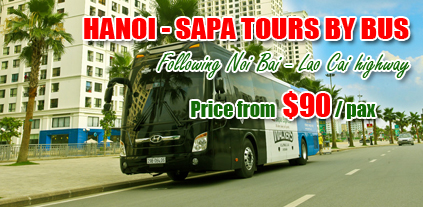A trip to the Old Quarter in Hanoi, Vietnam is a must for any first-time visitor to Vietnam’s capital. Set just a few minutes’ walk from Hoan Kiem Lake, the Old Quarter is an intricate warren of streets laid out in a millennium-old plan, selling almost everything under the sun.
The Old Quarter’s narrow streets are packed with family-owned shops selling silks, stuffed toys, artwork, embroidery, food, coffee, watches, and silk ties.
There are plenty of great bargains to be had in the Old Quarter: you simply need to haggle the price down.
The Old Quarter’s shops attract tourists and locals alike, making this place a great destination to see the local color.
The high tourist traffic has also developed a high concentration of travel agencies and hotels as well.
Shopping in the Old Quarter
Silks. Vietnam in general offers great value on silk. Lower prices and cheap labor go hand in hand to offer unbeatable bargains on meticulously-crafted silk dresses, trousers, even shoes.
Hang Gai Street is the best place in the Old Quarter to scratch your silk itch, especially Kenly Silk on 108 Hang Gai (Phone: +84 4 8267236; official website). Its shop in the Old Quarter has three floors offering a wild variety of silk goods, including ao dai, dresses, throw scarves, pajamas, suits, and shoes.
Embroidery. Embroidery is a common cottage industry in Vietnam, which means you’ll find plenty of bad embroidery.
For the absolute best of the craft, I can only recommend you visit Quoc Su on 2C Ly Quoc Su Street. Established in 1958, the company was founded by embroidery artist Nguyen Quoc Su, and now runs with more than 200 skilled embroiderers turning out almost photo-perfect stitched artwork.
Lacquerware. “Son mai” is the art of applying resin coating to wooden or bamboo objects, then polishing them to a deep shine. Many of them are also inlaid with eggshells or mother of pearl. These objects can come in the form of bowls, vases, boxes, and trays.
The streets of the Old Quarter offer plenty of examples of the art, not all of them good – you’ll need a good eye (and nose) to spot excellent handiwork from the abundant dross in the market.
Propaganda Art. The Vietnamese aren’t above capitalizing on Communist propaganda, and several shops in the Old Quarter are particularly renowned for their Red media material. Old propaganda reproductions are sold on Hang Bac Street.
You certainly don’t need to explore all 70-odd streets of the Old District to get the complete shopping experience – you can limit yourself to making a circuit of Hang Be, Hang Bac, Dinh Liet, and Cau Go. If you’re looking for specific merchandise, some Old Quarter streets may specialize in your object of desire:
Hang Can for stationery
Hang Dau for shoes
Hang Buom for candies and wine
Thuoc Bac for tools
Cau Go for women's accessories.
Hang Gai for silk
Hang Hom for lacquerware and bamboo
The Old Quarter’s “36 Streets”
The Old Quarter is a reminder of Hanoi’s storied past – its history has long been tied to the ebb and flow of conquerors and traders over the past thousand years.
When the Emperor Ly Thai To moved his capital to Hanoi in the year 1010, a community of craftsmen followed the imperial entourage to the new city. The craftsmen were organized into guilds, whose members tended to stick together to protect their livelihoods.
Thus the streets of the Old Quarter evolved to reflect the different guilds that called the area home: each guild concentrated their business along an individual street, and the streets’ names reflected the business of the guilds that lived there. Thus are the Old Quarter’s streets named to this day: Hang Bac (Silver Street), Hang Ma (Paper Offerings Street), Hang Nam (Gravestone Street), and Hang Gai (silk and paintings), among others.
Folklore pegs the number of these streets at 36 – therefore you’ll hear about the Old Quarter’s “36 streets”, when there are certainly far more than this number criss-crossing the area. The number “36” may just be a metaphorical way of saying “plenty”, i.e. “plenty of streets here!”
The neighborhood is no stranger to change. Most of the craftsmen have left, leaving the shop spaces to the restaurants, hotels, bazaars, and specialty shops that now line the ancient roads. Other, newer merchandise has taken over, too – the street called Ly Nam De is now the Old Quarter’s de facto “Computer Street”, offering cheap items and repairs.
The shophouses in the Old Quarter are long and narrow, owing to an ancient tax that charged shopowners for the width of their storefronts. Thus homeowners did a work-around – keeping storefronts as narrow as possible, while maximizing space in the back. Today these are called “tube houses” owing to their shape.
Getting to the Old Quarter
If you’re not staying in one of the Old Quarter’s hotels, you can easily get a cab to take you there – you can simply ask to be let down at at Hoan Kiem Lake, preferably close to the red bridge. From there, you can cross the street north to Hang Be, and begin your voyage through the Old Quarter by foot.
Use Hoan Kiem Lake as a point of reference – if you feel lost, ask a local where Hoan Kiem Lake is.
By Michael Aquino - goseasia.about.com











